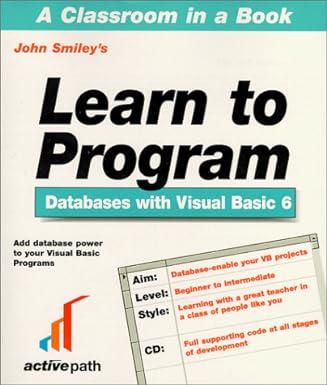Question
1. Define a class B1 with a virtual function vf() and a non-virtual function f(). Define both of these functions within class B1. Implement each
1. Define a class B1 with a virtual function vf() and a non-virtual function f(). Define both of these functions within class B1. Implement each function to output its name (e.g., B1::vf()). Make the functions public. Make a B1 object and call each function.
2. Derive a class D1 from B1 and override vf(). Make a D1 object and call vf() and f() for it.
3. Define a reference to B1 (a B1&) and initialize that to the D1 object you just defined. Call vf() and f() for that reference.
4. Now define a function called f() for D1 and repeat 13. Explain the results.
5. Add a pure virtual function called pvf() to B1 and try to repeat 14. Explain the result.
6. Define a class D2 derived from D1 and override pvf() in D2. Make an object of class D2 and invoke f(), vf(), and pvf() for it.
7. Define a class B2 with a pure virtual function pvf(). Define a class D21 with a string data member and a member function that overrides pvf(); D21::pvf() should output the value of the string. Define a class D22 that is just like D21 except that its data member is an int. Define a function f() that takes a B2& argument and calls pvf() for its argument. Call f() with a D21 and a D22
Step by Step Solution
There are 3 Steps involved in it
Step: 1

Get Instant Access to Expert-Tailored Solutions
See step-by-step solutions with expert insights and AI powered tools for academic success
Step: 2

Step: 3

Ace Your Homework with AI
Get the answers you need in no time with our AI-driven, step-by-step assistance
Get Started


